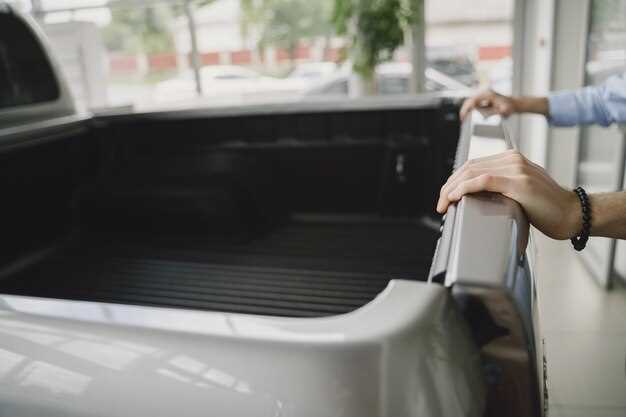Cleaning your engine bay safely at home

Your vehicle’s engine bay is a crucial component that often goes overlooked during routine maintenance. A clean engine bay not only enhances the overall appearance of your vehicle but can also help in identifying potential problems before they escalate. However, the process of cleaning this area requires special attention to safety and the proper techniques to avoid damage to sensitive components.
Cleaning the engine bay involves removing dirt, grease, and debris that accumulate over time. This buildup can not only affect the aesthetic appeal of your vehicle but may also hinder performance by obstructing airflow and cooling systems. By following safe and effective cleaning methods, you can ensure that your engine stays in good condition while reducing the risk of damaging electrical parts or sensitive sensors.
In this article, we will explore various safe cleaning techniques that you can easily perform at home. From selecting the right tools and materials to understanding how to protect key engine components, we will provide you with the essential knowledge to tackle this task confidently. Whether you’re preparing for a car show or simply enhancing your vehicle’s maintenance routine, proper cleaning of the engine bay is an important step that shouldn’t be neglected.
Choosing the Right Cleaning Products for Your Engine Bay
When it comes to cleaning your engine bay, selecting the right products is essential to ensure safety and effectiveness. Using the wrong cleaning agents can damage sensitive components or create harmful fumes. Here are some guidelines to help you choose the best cleaning products for your engine bay.
1. pH-Neutral Cleaner: Look for a pH-neutral cleaning solution. These products are typically gentle and will not cause corrosion on metal parts or degrade plastic and rubber components. They effectively break down grease and grime without causing any adverse reactions.
2. Degreasers: A specialized degreaser can be incredibly beneficial for tackling tough oil and grease build-up. Ensure the degreaser you select is safe for automotive use, as some industrial-grade cleaners can be overly harsh. Always follow the manufacturer’s instructions for dilution and application.
3. Biodegradable Options: Environmentally friendly products are increasingly available and pose less risk to the surrounding environment when cleaning. These biodegradable cleaners efficiently clean while minimizing ecological impact, making them a great choice for conscious car owners.
4. Non-Flammable Products: Given the presence of components that could ignite, it is vital to use cleaning products that are non-flammable. Avoid solvents or harsh chemicals that can produce flammable vapors and opt instead for safe, water-based alternatives.
5. Glass Cleaners: To keep the engine bay looking polished, consider using a glass cleaner for any transparent surfaces like headlights or windows. Choose a non-ammonia formula to avoid any potential damage to surrounding materials.
By selecting the right cleaning products, you can maintain a clean and safe engine bay without causing damage or creating hazards. Always read labels, follow safety precautions, and store your products properly after use for a cleaner, safer engine bay.
Step-by-Step Process to Protect Sensitive Components

Before you begin cleaning your engine bay, it’s crucial to protect sensitive components that could be damaged by cleaning agents or water. Follow these steps to ensure safety for all vulnerable parts.
First, disconnect the battery by removing the negative terminal. This prevents any electrical shorts or disruptions while you work on the engine bay. Make sure to secure the terminal so it doesn’t accidentally come into contact with the battery post.
Next, cover important electronic components such as the alternator, sensors, and fuse box with plastic wrap or plastic bags. This will help shield them from moisture and cleaning solutions. Use rubber bands or tape to secure the coverings so they won’t come loose during cleaning.
Remove or cover delicate items like the air intake and exposed wiring harnesses. You can use a waterproof bag or wrap them with plastic to avoid any unwanted exposure to cleaning products. It’s important to ensure no water can enter these critical areas.
If applicable, fit your engine bay with a protective mat or tarp. This provides an additional barrier between sensitive components and any debris or runoff from the cleaning process. Ensure the mat does not obstruct any ventilation or cooling systems.
After covering sensitive components, inspect the engine bay for any other elements that require protection, such as brake fluid reservoirs or critical hoses. Use appropriate materials to safeguard these parts from potential damage.
Once everything is adequately covered and secured, you can proceed with the actual cleaning process. By taking these precautionary measures, you significantly reduce the risk of damage to sensitive components within your engine bay.
Best Techniques for Rinsing and Drying the Engine Bay

Cleaning your engine bay requires careful attention to detail, especially during the rinsing and drying processes. Here are some effective techniques to ensure a clean and safe engine bay:
-
Preparation:
- Allow the engine to cool completely to prevent damage.
- Cover sensitive components like the air intake, electrical parts, and exposed filters with plastic bags or aluminum foil.
-
Initial Rinsing:
- Use a low-pressure water source, such as a garden hose, to avoid forceful water streams that can harm components.
- Start rinsing from the top of the engine bay and work your way down to ensure dirt and debris flow out.
-
Cleaning Solution:
- Apply a biodegradable engine degreaser to any greasy or dirty areas.
- Let the degreaser sit for a few minutes to break down grime before rinsing again.
-
Final Rinse:
- Rinse with water, ensuring that all degreaser and dirt are completely removed.
- Use a soft brush to scrub stubborn spots if necessary.
-
Drying Techniques:
- Utilize a microfiber cloth to wipe down accessible areas; this helps prevent water spots.
- Use a leaf blower or compressed air to blow out water from tight spaces and crevices.
- Allow the engine bay to air dry as much as possible to avoid moisture trapping.
-
Post-Cleaning Inspection:
- Check for any residues of cleaner or moisture left behind.
- Ensure all components are securely fastened and that no bags or covers have been left behind.
By following these techniques, you can effectively rinse and dry your engine bay while minimizing the risk of damage and ensuring a thoroughly clean surface.

